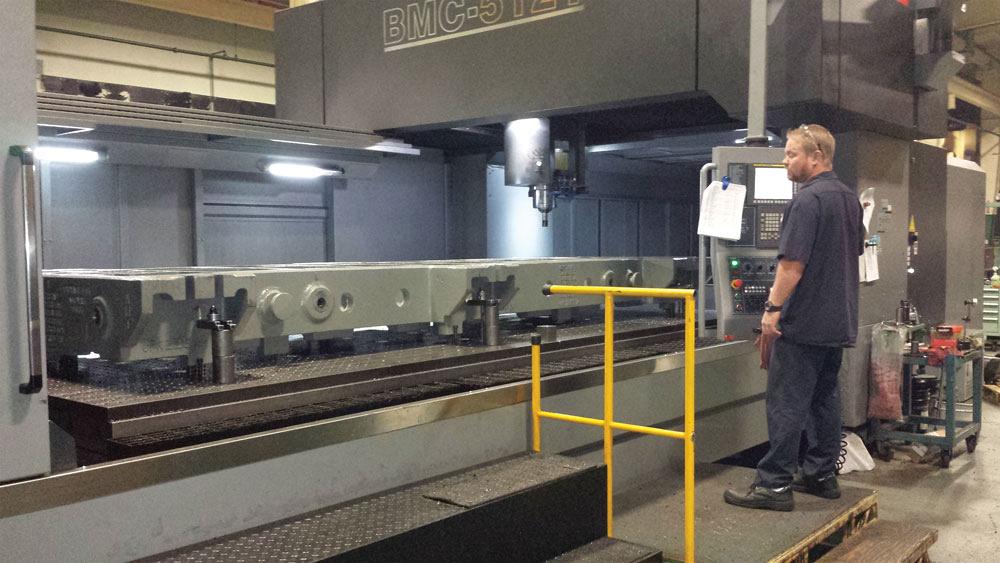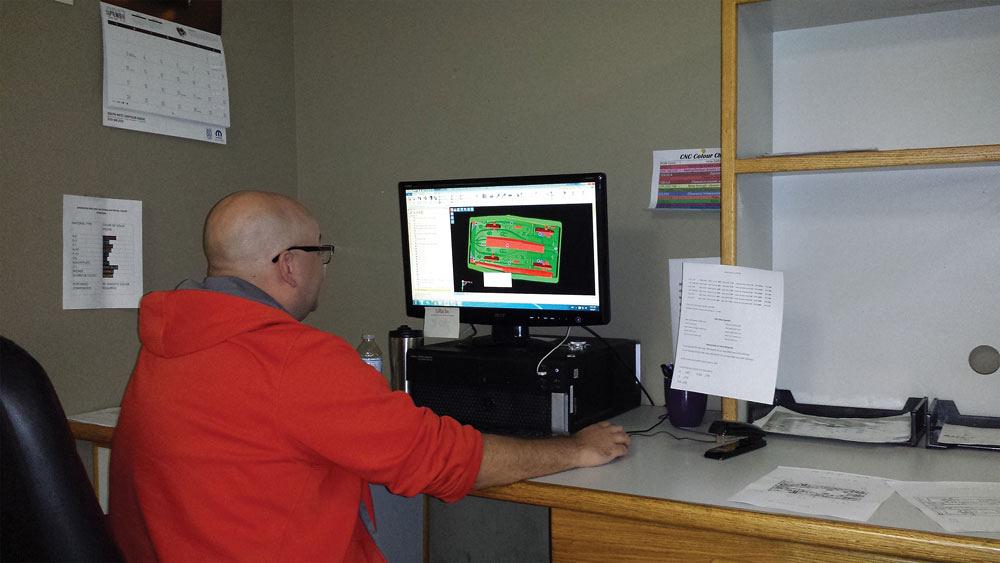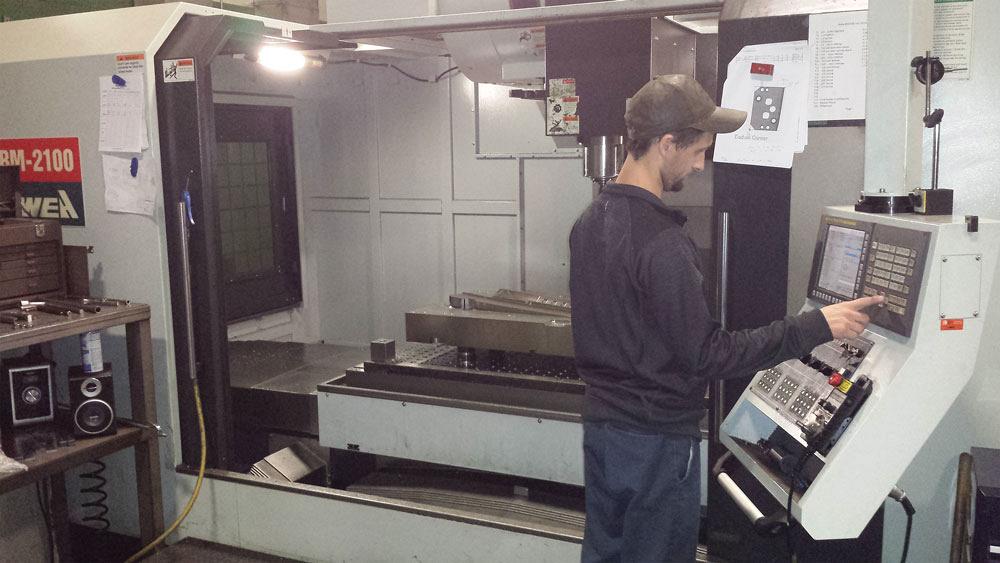- FMA
- The Fabricator
- FABTECH
- Canadian Metalworking
Cutting-edge machining
Ontario manufacturer uses software automation to increase efficiency while reducing human error, generating reliable programs
- By Canadian Metalworking
- January 17, 2018
- Article
- Automation and Software
Situation
Numbers don’t lie, which is how manufacturers know when they’ve achieved the kind of greater overall efficiency and competitiveness to which they aspire.
Such was the case for Anderdon Tool & Manufacturing, Oldcastle, Ont., a 30-year-old producer of metal stamping dies — including progressive, transfer, and line dies — as well as prototype parts and gauges.
By offering numerous in-house design and engineering services, Anderdon is a one-stop die shop that enhances communication among project managers, designers, engineers, toolmakers, and customers. Dedicated to the production of reliable, high-quality tooling and striving to meet or exceed its delivery deadlines, Anderdon retains loyal, repeat customers and attracts new business by maintaining a reputation for excellence.
“Fostering an innovative environment allows Anderdon Tool the flexibility to quickly and efficiently take on new products, as well as to embrace R&D projects, new machining techniques, and new work in the areas of prototype parts, reverse engineering, and experimental parts,” said Anderdon CNC Manager Mark Klem.
Though Anderdon was using a CAM package, it did not allow the company’s programmers to integrate 2-D and 3-D machining without using multiple software packages to achieve the desired speed and accuracy. To increase efficiency, the shop needed a CAM system capable of generating accurate NC code for numerous components ranging from simple to complex.
Solution
The company decided to switch to Vero Software’s Edgecam and purchased the software from distributor Ambo Technologies Canada.
Ambo offers consulting services and packages designed to meet the specific needs of customers.
Anderdon combined forces with Ambo to implement Edgecam 2-D and 3-D automation strategies. The goal was to increase competitiveness by reducing programming time on repetitive tasks, enforcing company standards, and reducing errors.
Ambo began the restructuring of the shop’s programming process by implementing 2-D, feature-based automation strategies customized for Anderdon’s needs. Among those strategies was the colour-coding of features to be machined — such as holes, pockets, and bores — at the design stage to indicate the dimensional tolerance and required surface finish.
The custom software strategies were built to capture this colour code and machine the features accordingly, based on the machining practices perfected over the years by Anderdon.
Built to be both simple and user-friendly, the custom Edgecam automation allows the programmer to select from a menu of options, such as which side of a plate is to be machined (top or bottom); which types of drills are to be used; and whether to tap, ream, or mill selected features. Once the options are set, the programmer plans the job and executes the plan. All features are then completely machined in accordance with the specifications.
The drilling strategies used offer built-in intelligence that helps to decide if, for example, a hole needs to be spot drilled, based upon the hole’s size. That same intelligence takes into account the machine tool and associated post-processors used for a job when determining vital job details, such as whether a preferred tool selection is made, and if the correct tooling is available in the tool library.
If spot drilling was not performed so there is no chamfer at the hole edge, the chamfering strategy recognizes this and chamfers the hole later in the process. This level of attention to detail ensures that all features are being machined completely while minimizing tool changes.
After implementation of the custom 2-D automation strategies, a typical two-hour programming session at Anderdon was reduced to 7-10 minutes, said Klem.
“The automation allows programmers of different experience levels to produce the most efficient and consistent results for machining,” he said. “We have been able to tailor our machining practices to stay on the cusp of tooling and machining technologies with very minor alterations to the automation strategies. We are now manufacturing with more controlled results.”
To automate 3-D machining strategies for Anderdon’s more complex 3-D components, Ambo used Edgecam’s JavaScript-based macrolanguage to apply machining instructions and generate toolpaths based on the solid model supplied from engineering.
Some of these challenging 3-D components require multiple roughing and rest-roughing processes using tools of various sizes for reaching tighter areas on the part, as well as multiple surfacing processes to machine the part completely.
The custom-built automation script is flexible, allowing the user to select only one machining process or as many as necessary. This allows the user to progress step-by-step through the machining process or, if possible, completely machine the part with one operation.
“Everything worked out well with the 3-D automation because Ambo was able to write the script to [do] exactly what I wanted,” Klem said. “This will be a definite game-changer for Anderdon, with 2-D and now 3-D automation.”
As with the establishment of 2-D automation strategies, ease of use was an important consideration in the development of Anderdon’s 3-D automation macro. Using the custom 3-D macro, the programmer launches one dialog box with multiple pages, sets the process or processes that are required, sets the tooling for each individual process, chooses whether to use containment boundaries to localize the area in which the toolpath should be created, and then hits the OK button.

Machinist/Programmer Joe Paterson works on the shop’s newest addition, a Kafo 5127 double-column bridge machine measuring 2.7 by 5 m. This machine purchase was a direct result of an increase in capacity and output resulting from the creation of 2-D and 3-D automation.
Geometry selection, if it is required based on the settings made, is performed before a toolpath is create. After this the tools are called up and the correct toolpath is generated without any further user input.
Following Ambo’s creation of custom 3-D Edgecam automation strategies, a typical five-hour programming job was reduced to 15-20 minutes, Klem said.
The automation strategies also have helped the company to substantially reduce machining errors and eliminate inefficient cutter paths, tool selection, and tool use. The combination of these benefits has resulted in reduced cycle times and tooling and carbide consumption, as well as increased output volumes.
“As a direct result of having these custom strategies and automation macros developed by Ambo, programming time for our vast array of components was drastically reduced, and we were able to virtually eliminate human error in the programming process while ensuring consistent and predictable programs and NC code for our machines,” Klem said. “This has also allowed us to process schedule changes quickly and still maintain our lights-out machining goals on a daily basis.”
Anderdon Tool & Manufacturing, 519-737-6246, www.anderdontool.com
Ambo Technologies, 416-213-0336, www.ambotech.com
Vero Software, 205-556-9199, www.verosoftware.com
About the Author
subscribe now


Keep up to date with the latest news, events, and technology for all things metal from our pair of monthly magazines written specifically for Canadian manufacturers!
Start Your Free Subscription- Industry Events
MME Winnipeg
- April 30, 2024
- Winnipeg, ON Canada
CTMA Economic Uncertainty: Helping You Navigate Windsor Seminar
- April 30, 2024
- Windsor, ON Canada
CTMA Economic Uncertainty: Helping You Navigate Kitchener Seminar
- May 2, 2024
- Kitchener, ON Canada
Automate 2024
- May 6 - 9, 2024
- Chicago, IL
ANCA Open House
- May 7 - 8, 2024
- Wixom, MI























